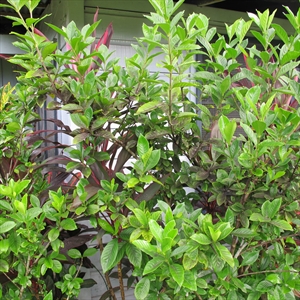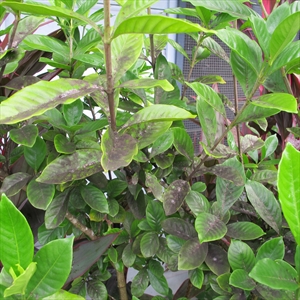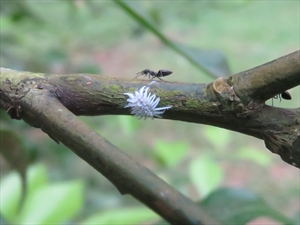- Worldwide distribution. In tropics and sub-tropics. Common on about 80 plant families, particularly fruit and forest trees, and herbaceous ornamentals, but also ferns, orchids and palms. Citrus and mango are the main hosts. An important pest.
- Eggs laid under females. “Crawlers” disperse, settle - often along midribs - moult and feed on sap, with excess expelled as honeydew. Damage by feeding and by sooty moulds growing on honeydew excreta and blackening leaves.
- Natural enemies: parasitoid wasps, but ants interfere with control by wasps and ladybeetles.
- Spread by crawlers on wind, and in the nursery trade.
- Cultural control: check nursery plants are free of scales; prune infested branches; destroy ants (hot water).
- Chemical control: soap, white or horticultural oils; or synthetic pyrethroids for ant control.
Pacific Pests, Pathogens and Weeds - Online edition
Pacific Pests, Pathogens, Weeds & Pesticides
Pink wax scale (271)
Pink wax scale, red wax scale
Ceroplastes rubens
AUTHOR Grahame Jackson
Information from Pink wax scale (2012) Department of Agriculture and Fisheries, Queensland Government. (https://www.daf.qld.gov.au/business-priorities/agriculture/plants/fruit-vegetable/insect-pests/pink-wax-scale); and from CABI (2016) Ceroplastes rubens (red wax scale). Crop Protection Compendium. (https://www.cabi.org/cpc/datasheet/12351). Photo 4 Randy Thaman, University of the South Pacific, Fiji.
Produced with support from the Australian Centre for International Agricultural Research under project PC/2010/090: Strengthening integrated crop management research in the Pacific Islands in support of sustainable intensification of high-value crop production, implemented by the University of Queensland and the Secretariat of the Pacific Community.







